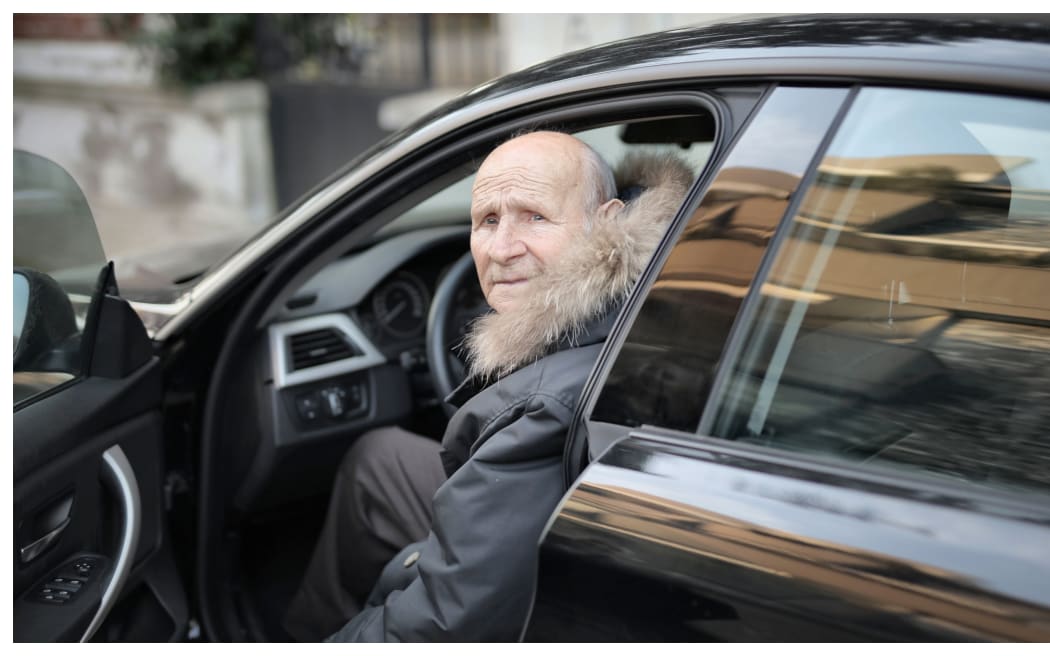After you turn 75 you might be asked by your doctor to do a cognitive driving test - we put two of these exams through their paces

By 2028 one in four New Zealand drivers will be over the age of 65. Photo: BeFunky
What do a sombrero in Argentina and cognitive driving tests have in common?
Don't worry, we're not setting up a bad joke. Hinengaro Clinic dementia clinician Gregory Winkelman has the answer on today's episode of The Detail.
"We ask a patient's spouse or son or daughter: ‘if you went to a cafe in Buenos Aires … and you were sitting there finishing your coffee and you said to the patient ‘on the way here, we saw a sombrero in a shop window, why don't you go and buy the sombrero and I'll see you back here in 20 minutes'?"
That’s with the family member sitting in the café with the patient, assuming they saw the sombrero on the way to the café in the first place.
Winkleman says the patient's reaction to the family members suggestion is a “pretty good indication” of whether their driving might be in question.
"If they say to you 'I'm not sure that would be safe' - in other words they wouldn't be able to navigate in an unfamiliar environment - that's an indication that there could be a problem."
He favours this sort of evaluation over the infamous cognitive tests people over 75 may have to do to keep their licence.
There's recently been a lot of controversy over the Mini-ACE and SIMARD-MD.
Winkelman won't use the SIMARD-MD and uses the full ACE test, rather than the mini version.
He still thinks there's a "big problem" with cognitive tests.
"No matter what cognitive test you do, it's very limited in its ability to test a person's cognition in a clinical setting. Because when you go to a GP, or you go to anybody really and you're sitting in their clinic and you think that your driving is on the line, you get incredibly anxious - and that really affects your concentration.
"Especially when it comes to people where the driving is in question, we see them in their own homes. Our assessment takes an hour-and-a-half to two hours. We spend a great deal of time just chatting, having a cup of tea, eating a biscuit, getting some social history, some cognitive history and then towards the end of the assessment we do the cognitive test. The cognitive test tends to be in the second tier of evidence we use. The most important evidence is what the patient themselves and the people who know the patient say about their functioning."
You're invited to test yourself, your friends and family as you listen to today's episode - you can easily hit the pause button as presenter Tom Kitchin tests his colleagues - and he gets tested himself.
The episode also looks at another issue in the realm of driving licences - the removal of re-sit fees which has caused wait-times for licence tests to blow out.
Mark Revill-Johnson is president of the New Zealand Institute of Driver Educators and it's fair to say he's not a fan of these changes, which were brought in October last year.
"The thinking behind this, the intention of it, was to increase accessibility to more people," he says.
"Cost, obviously, is a factor. When you're deciding what to spend your household budget on, maybe a driving licence is low down the list.
"Unfortunately, it didn't work as planned, because people have started to view the re-sit as 'well ok, it doesn't matter, I just rebook and go again - it doesn't cost me anything more."
That's led to wait times of two to four months and Revill-Johnson says any fix will fall between "a rock and a hard place".
"Let's say for example, we flip that on its head, and you say: 'you can have your first test for free but then you pay for a re-sit'. I think that would be a preferable system because it might convince people to prepare properly for the test in the first place."
Check out how to listen to and follow The Detail here.
You can also stay up-to-date by liking us on Facebook or following us on Twitter.


